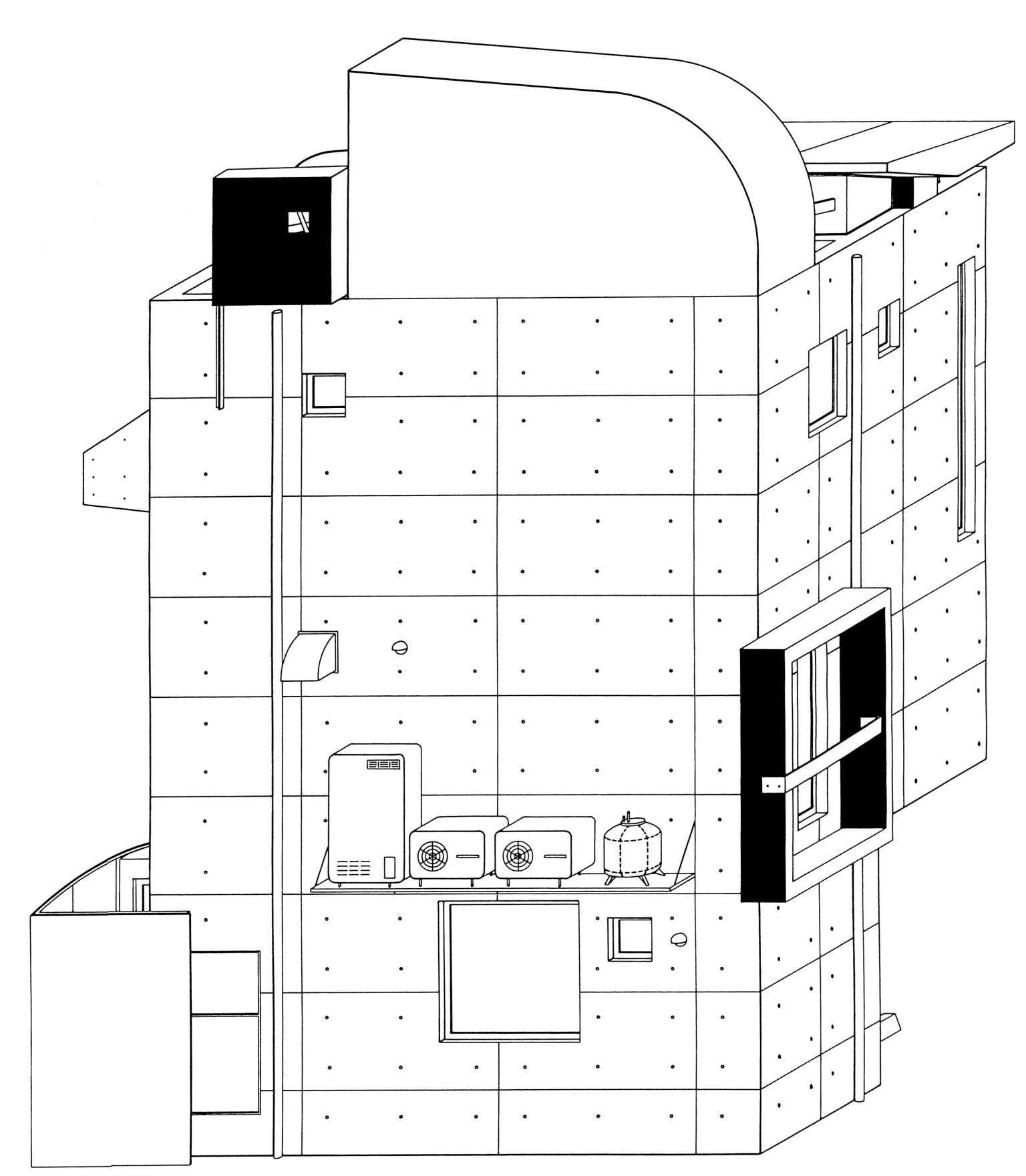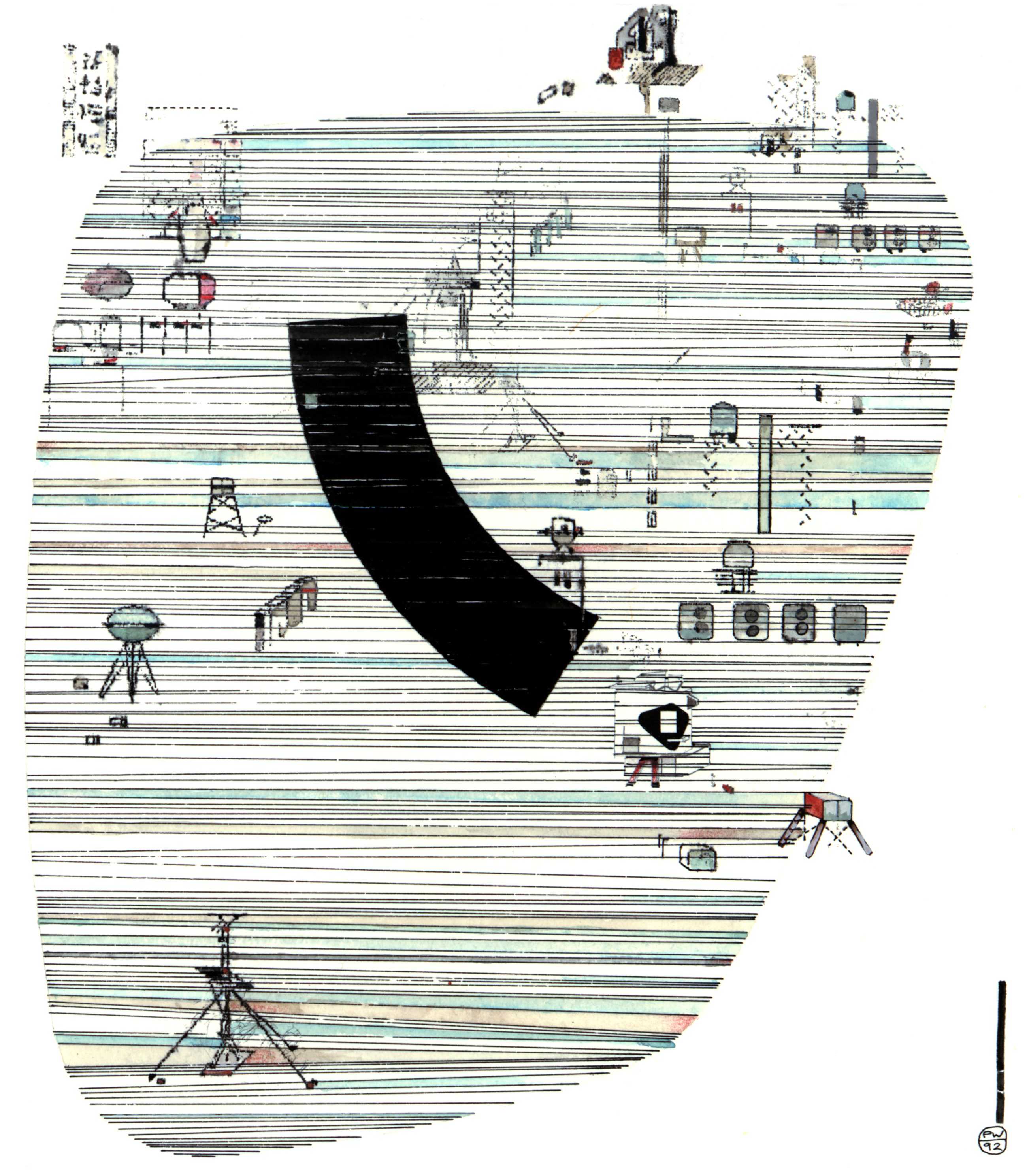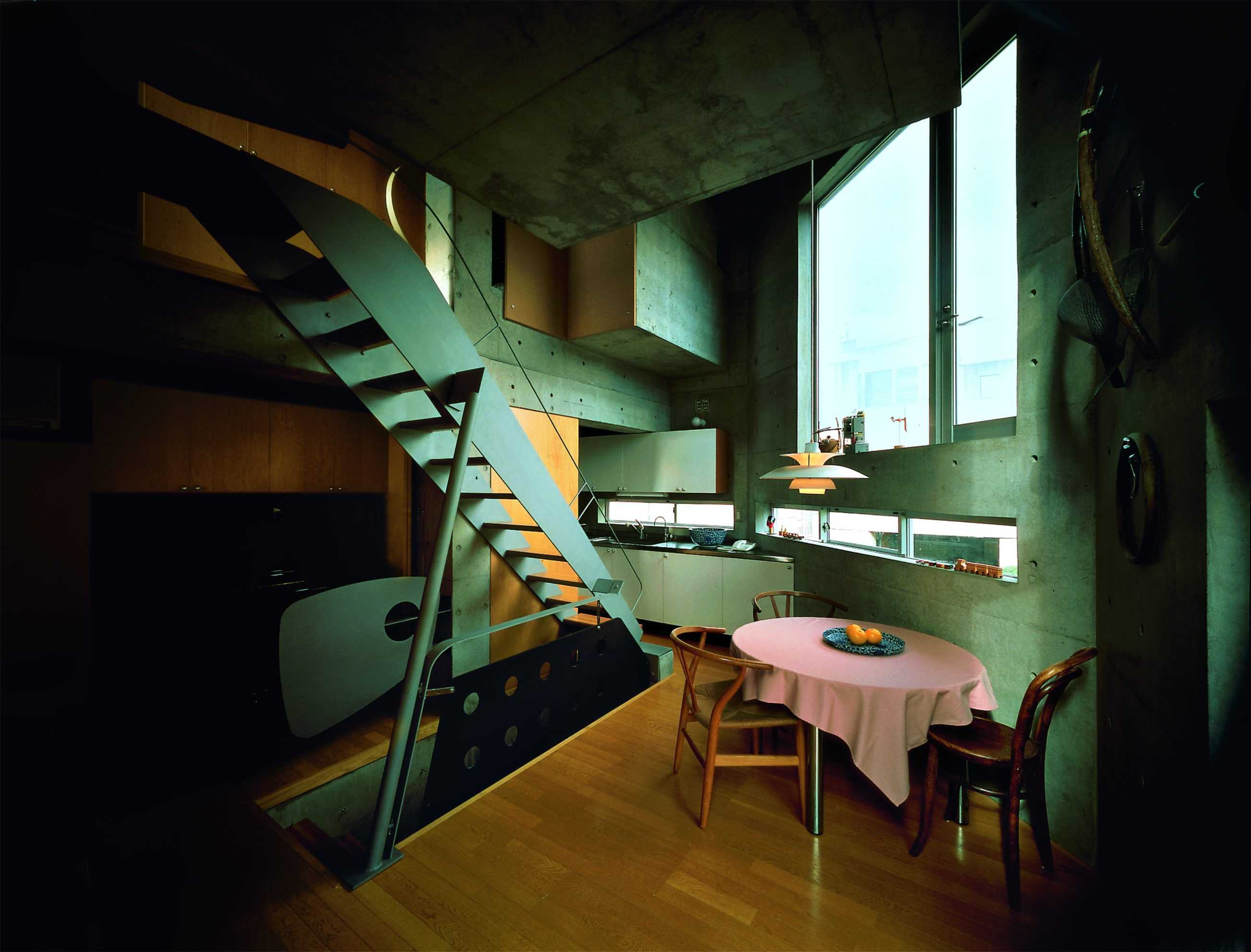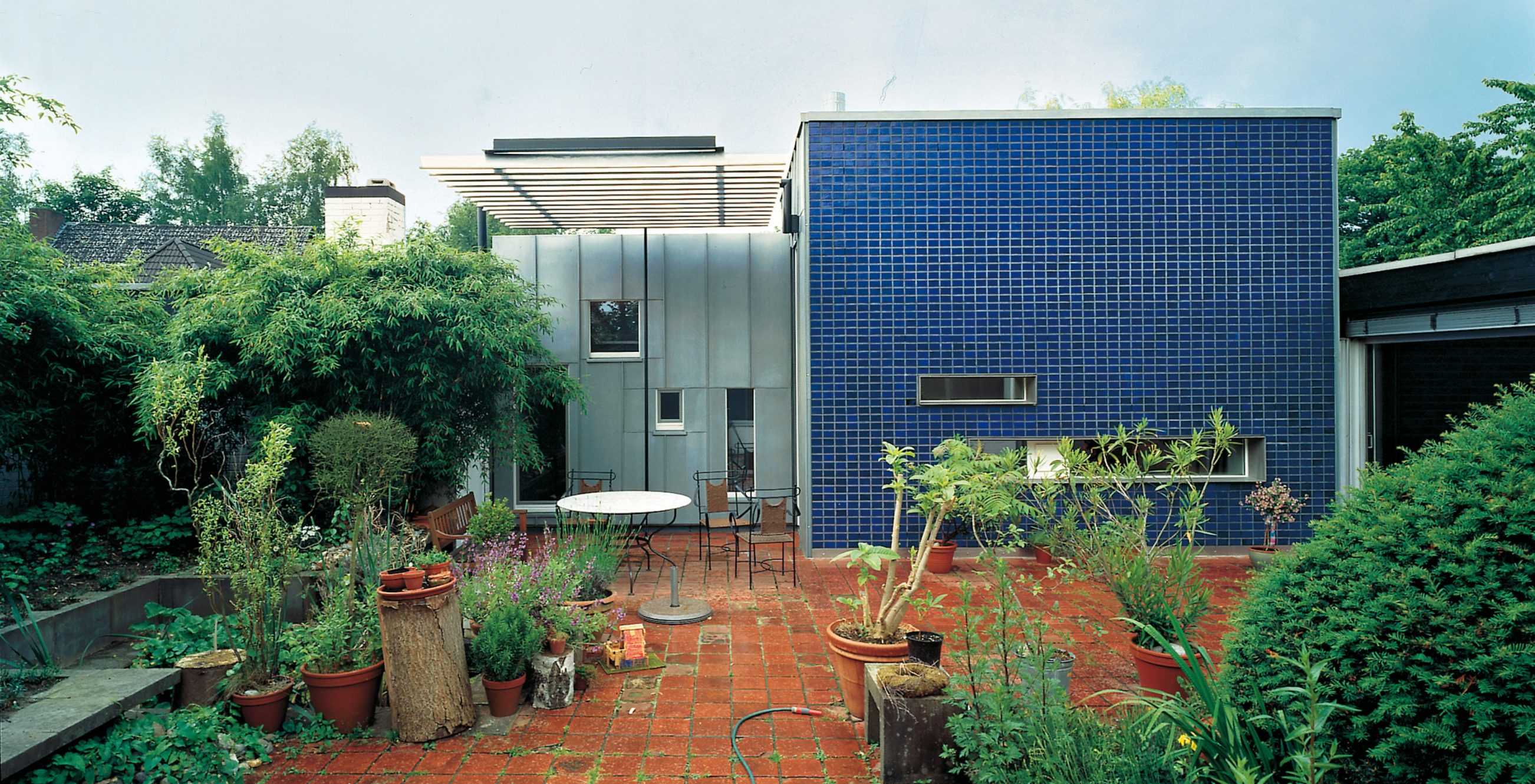
Dub House
TYPOLOGY: Residential
COUNTRY: Germany
CITY: Munster
YEAR: 1993
PHOTOS: © BOLLES+WILSON
The principal element, a Blue Glazed Brick Wall corrects a disastrous alteration and also breaks the tyranny of uniform ceiling height.
The second added element, a Zinc Clad Studio Box stands adjacent the Blue Wall. The two set up an external and internal play – geometric volumes – the abstract language of the plan respected and developed.
A very modest commission, careful details with the potential of enhancing the everyday lives of their users.

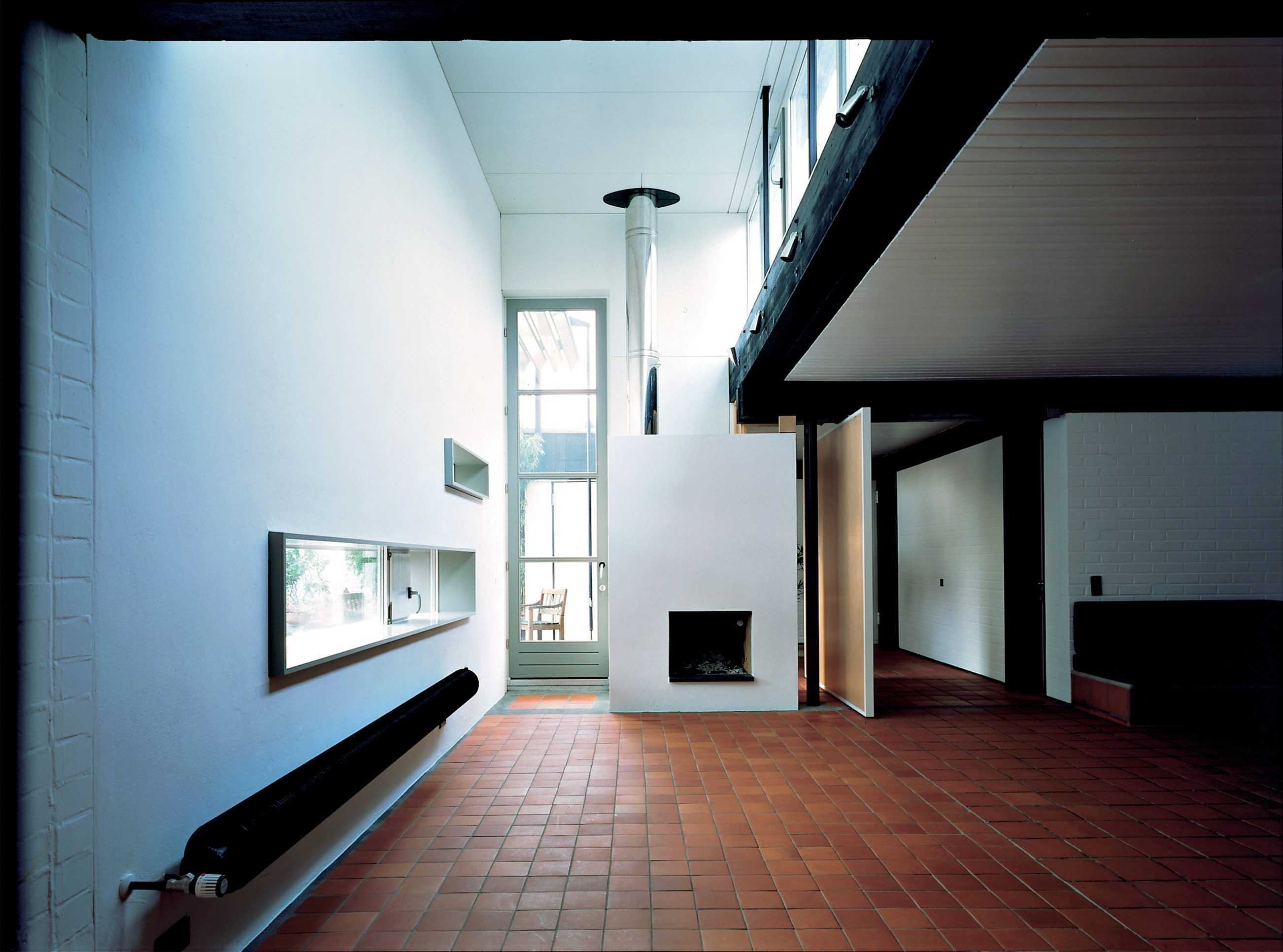




Münster City Library
TYPOLOGY: Cultural
COUNTRY: Germany
CITY: Münster
YEAR: 1993
COMPETITION: 1987, First Prize
CLIENT: City of Münster
COLLABORATOR: Harms & Partner (in realization phase)
AWARDS: Mies van der Rohe Award 1995, Nomination
German Architecture Award 1995, Commendation
PHOTOS: © Christian Richters, Julia Cawley (update 2010)
The Münster Library was BOLLES+WILSON’s first major public commission. After more than ten years it remains near the top of Germany’s ‘library-user-ranking-list’. A verification not only of functionality but also of the attention to detail, to spatial multiplicity and to the ambience and atmosphere within.
The complexities of the overall building form are derived from internal organisation and from a careful re-constitution of the fragmented context. A new pedestrian street on the axis of the nearby Lamberti Church divides the not inconsiderable mass of the Library. This fissure in the library volume is closed with folded screens (copper outside, acoustically absorbing perforated wood panels within).
A transparent entrance zone (café, newspaper salon) leads via an information supermarket to the main information desk on the connecting bridge. This in turn is adjacent to book stacks in the ship-like outer volume. The atmosphere is quiet, studious. Books line the outer curved wall, a dramatic stair leads down through a 22 m void to the basement media library, which connects in turn to the courtyard facing children’s library and back up to the entrance zone. Up to four thousand users enter the Münster Library on one day.
+ + +
Münster City Library – Update 2010
With a newly painted facade and new automatic check out and 24-hour return automat the Münster City Library in its 18th year remains near the top of the German public library ranking list.







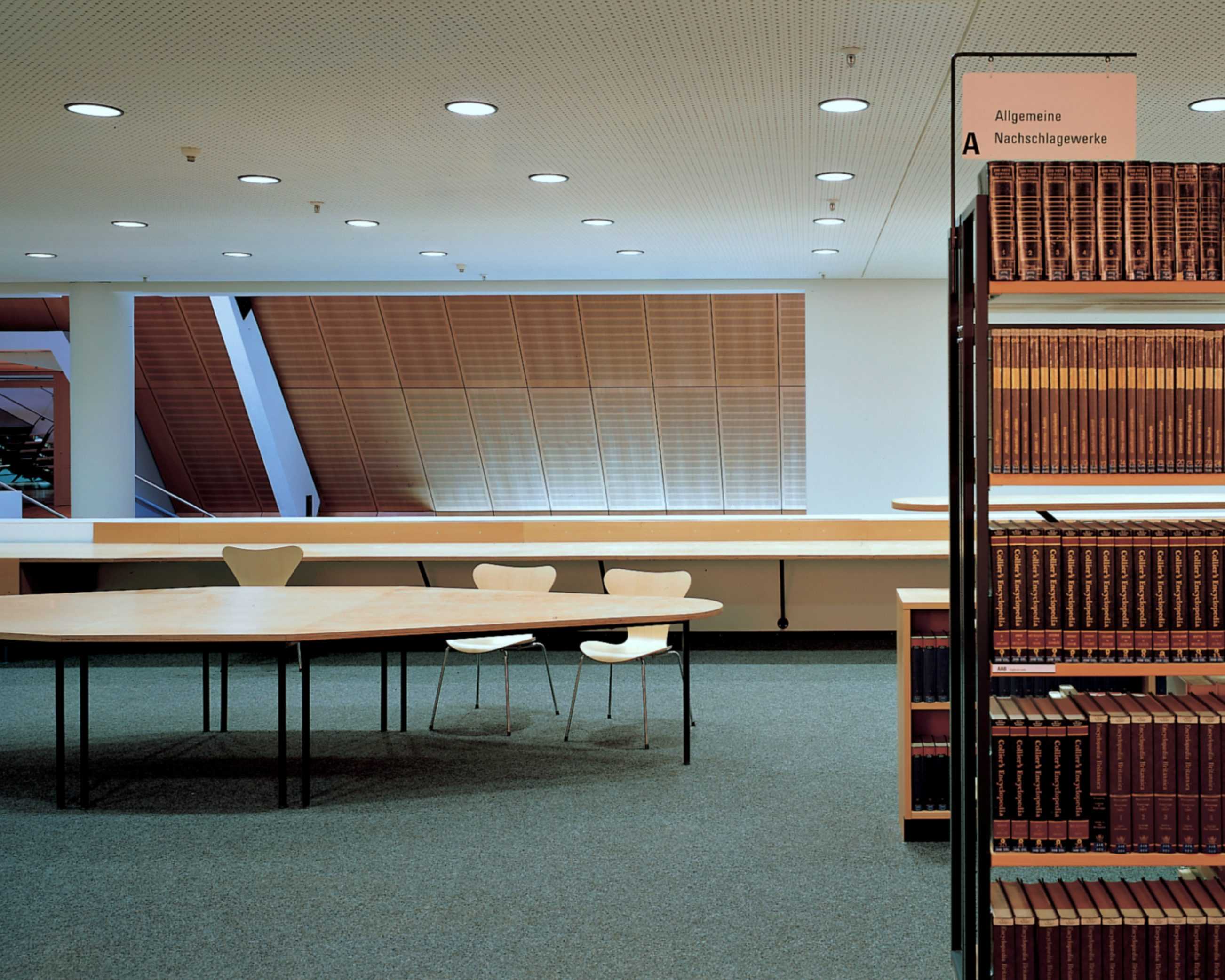
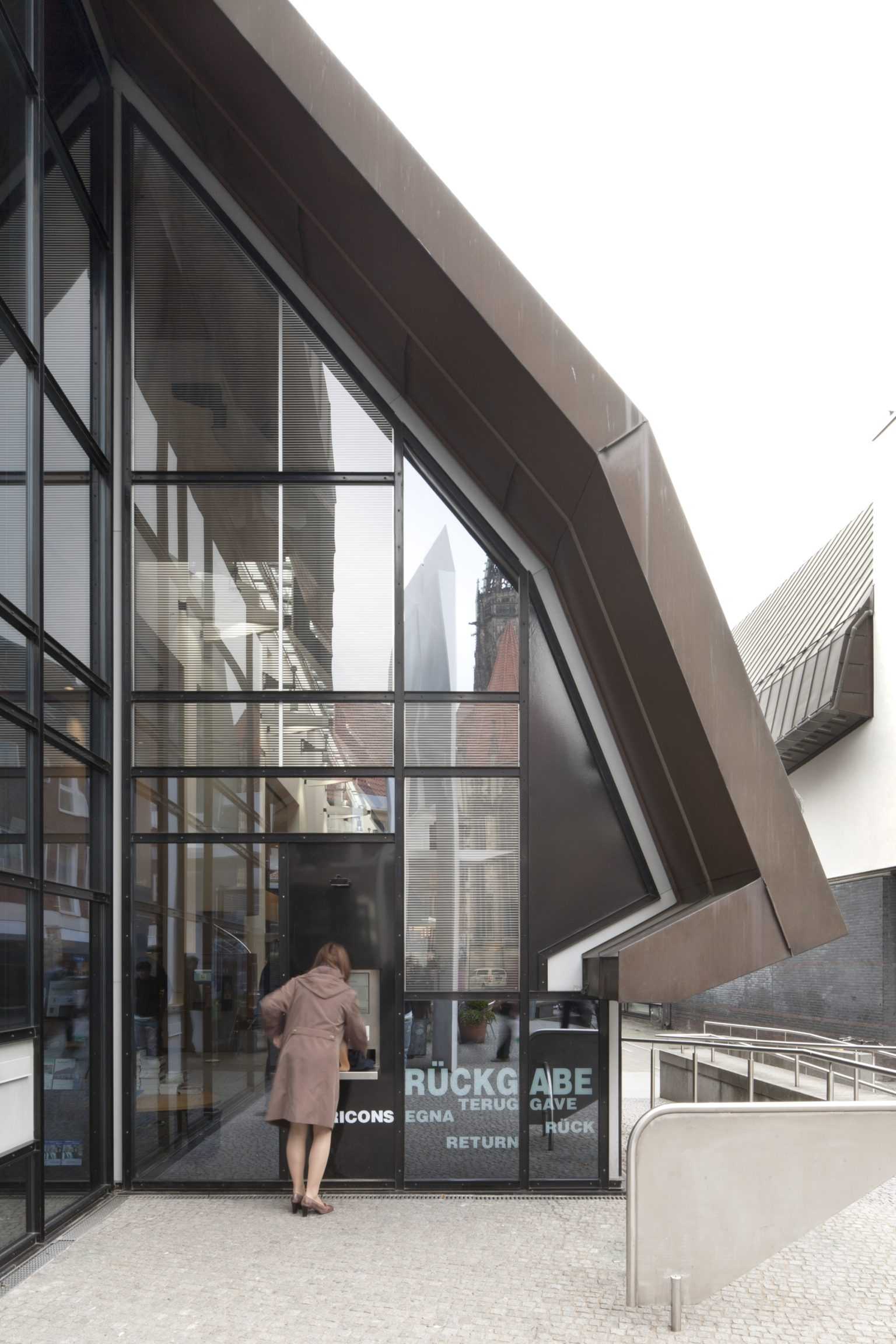















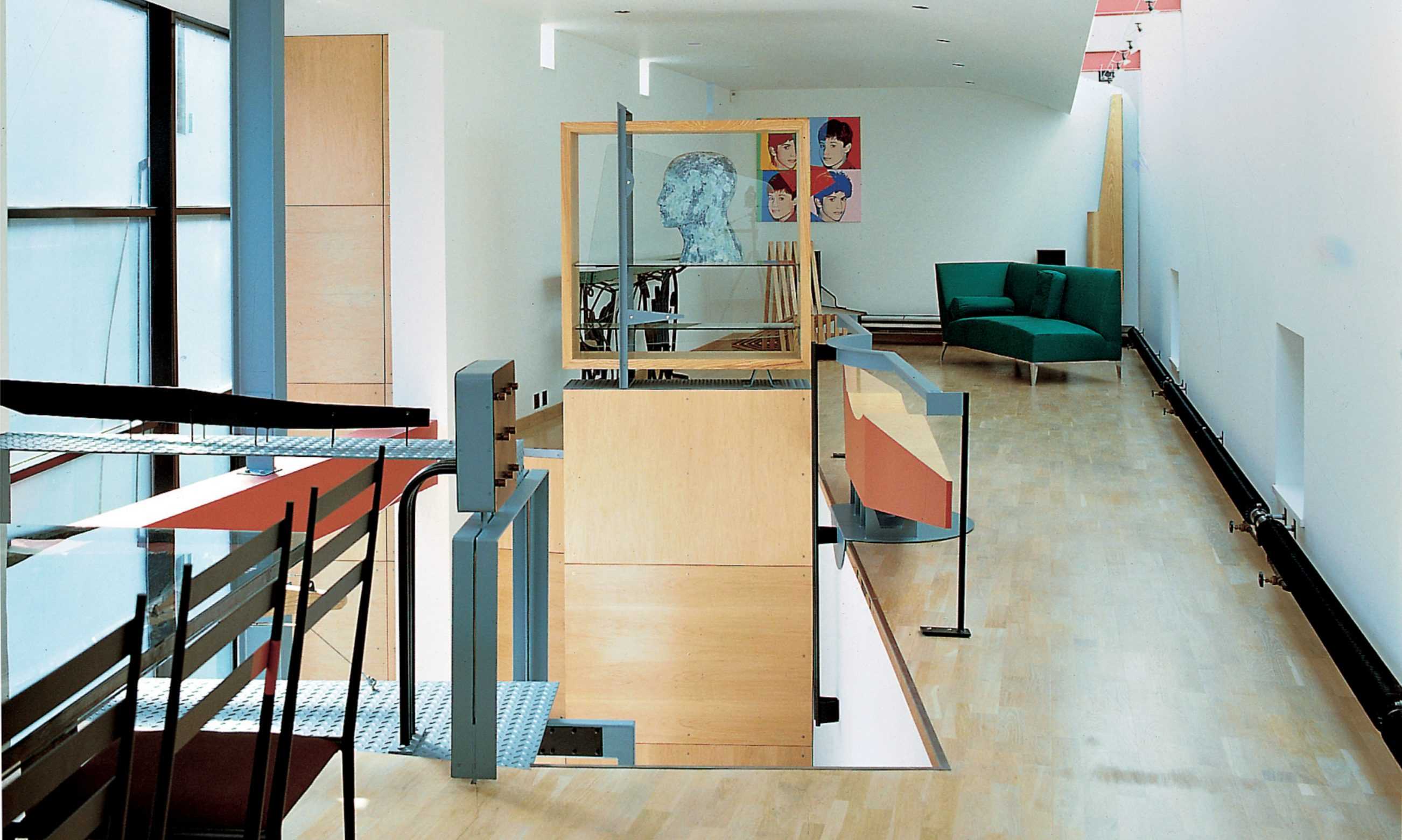
Blackburn House
TYPOLOGY: Residential
COUNTRY: UK
CITY: London
YEAR: 1987
PHOTOS © BOLLES+WILSON
No grand statement rather a series of practical opportunities. First the restructuring of the row of rundown Mews Houses into a new white box. A large window breaks through the white façade, the view is not good, the glass is opaque, blinded.
Ground floor office, a two floor apartment housing, a collection; Barry Flanagan (hare), Scott Burton (chair), Andy Warhol (portrait), Bruce McLean (table), Ron Arad (table), Jasper Morrison (sofa). Interior details are added to this list – supporting column and cantilevered balcony in steel, a vitrine, a floating boat – seat – handrail – individual narratives in a limited range of materials.
The upper floor with its 14 m skylight-wall functions as gallery, the lower lobby as chair hall. Sitting on the central barge seat the visitor has reached the vortex of the composition hovering like the house itself, not quite part of London.


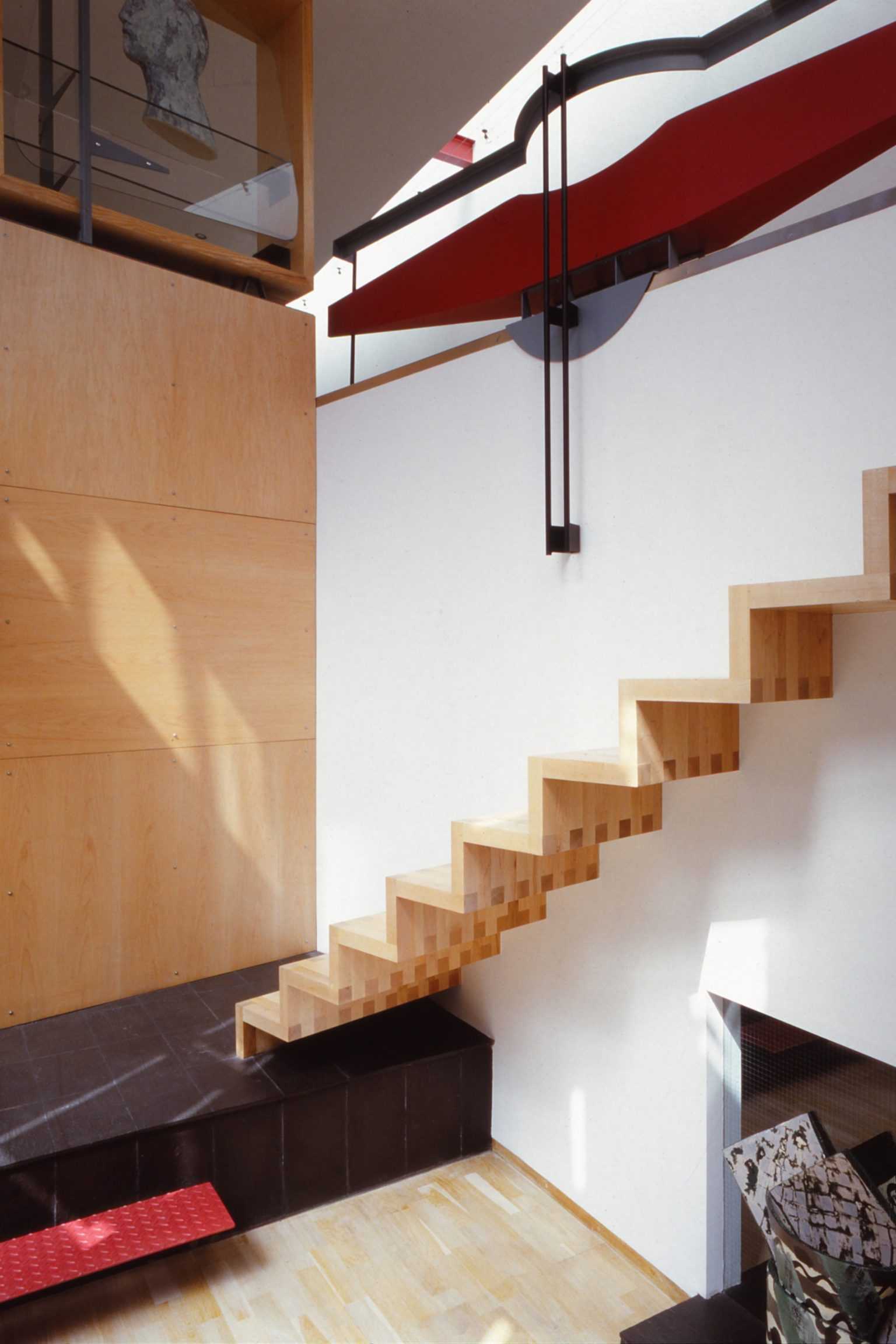

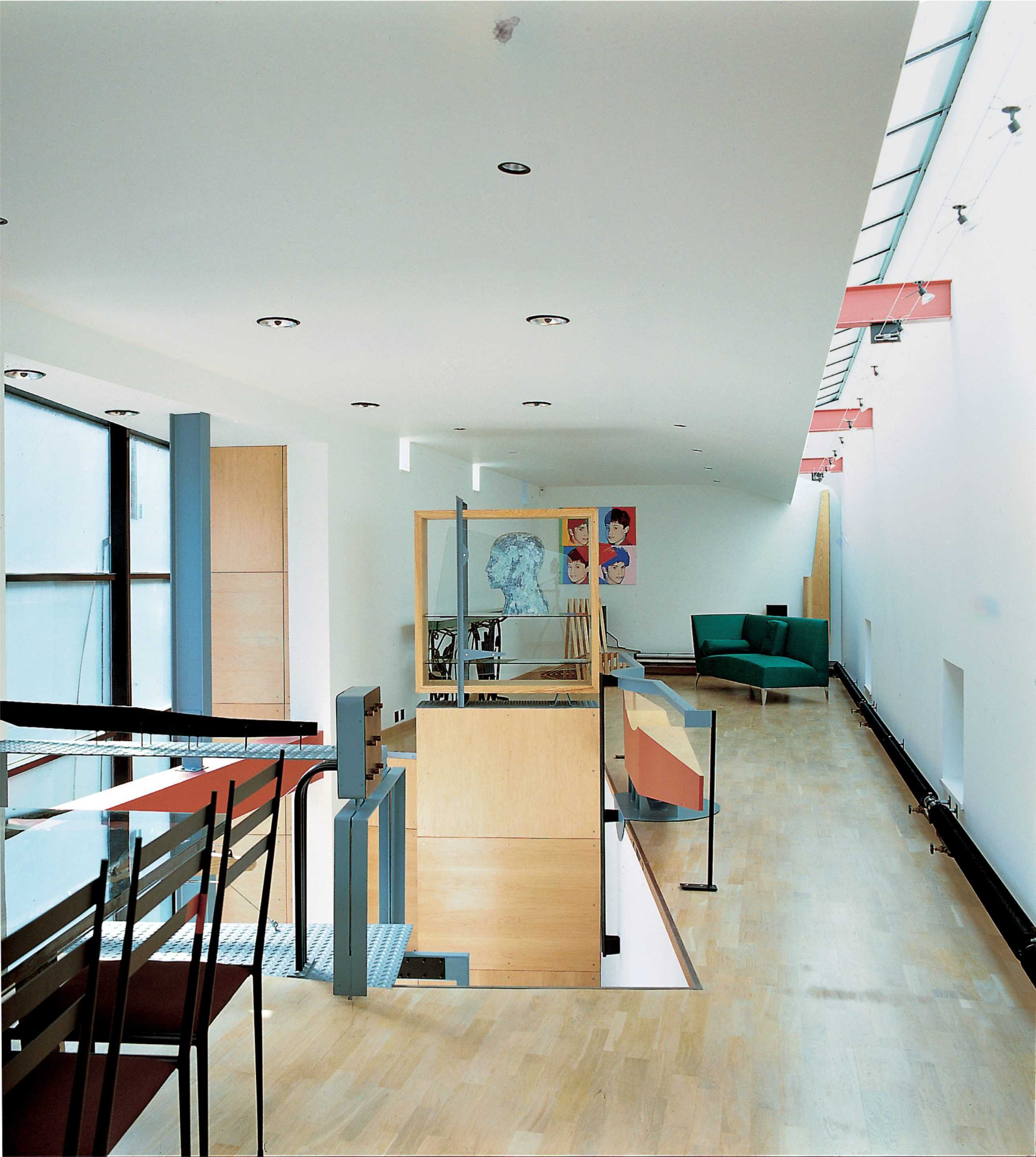


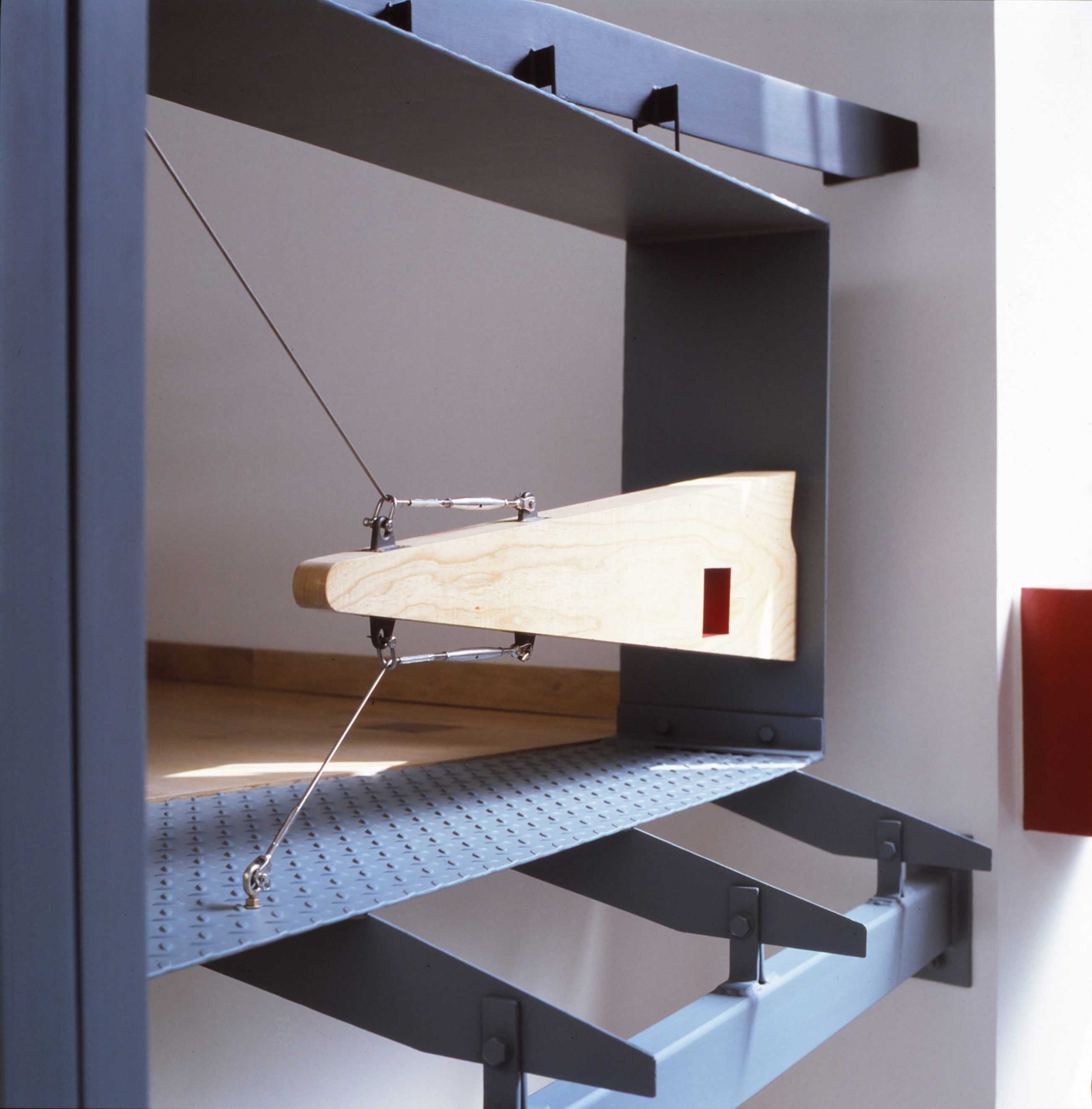






Technology Centre
TYPOLOGY: Office / Laboratory / Conference
COUNTRY: Germany
CITY: Munster
YEAR: 1993
GFA: 16.000 sqm
CLIENT: Technologiehof Münster GmbH
PHOTOS: © Christian Richters
The university zone of Mnster (like most of what we still call cities) is a mixture of isolated large buildings, open space and fragments of small scale, residential patterns. Rather than attempting to stitch together buildings in a coherent or unifying pattern, the Technologiehof accepts its autonomy and in doing so legitimizes the voids between as today’s characteristic urban condition.
The three discrete objects of the Technologiehof also mark an end to the city. To the north are green fields, to the south (bridge side) is the semi-urban campus. Within their precise form the façades are a consequence of this double direction.
Three precise rectilinear forms (unambiguous autonomous objects) are a consequence of the construction system: standardised precast columns, beams, wall and floor panels. The expression of technology is limited to the shiny aluminium skin.
Small, highly serviced, commercially rented laboratories (bio-sensoric research, environment and telecommunications research) flank a middle building with offices and conference facilities. Triangular tapering winter gardens at third floor level provide relief from the absorbing rigour of the working spaces.







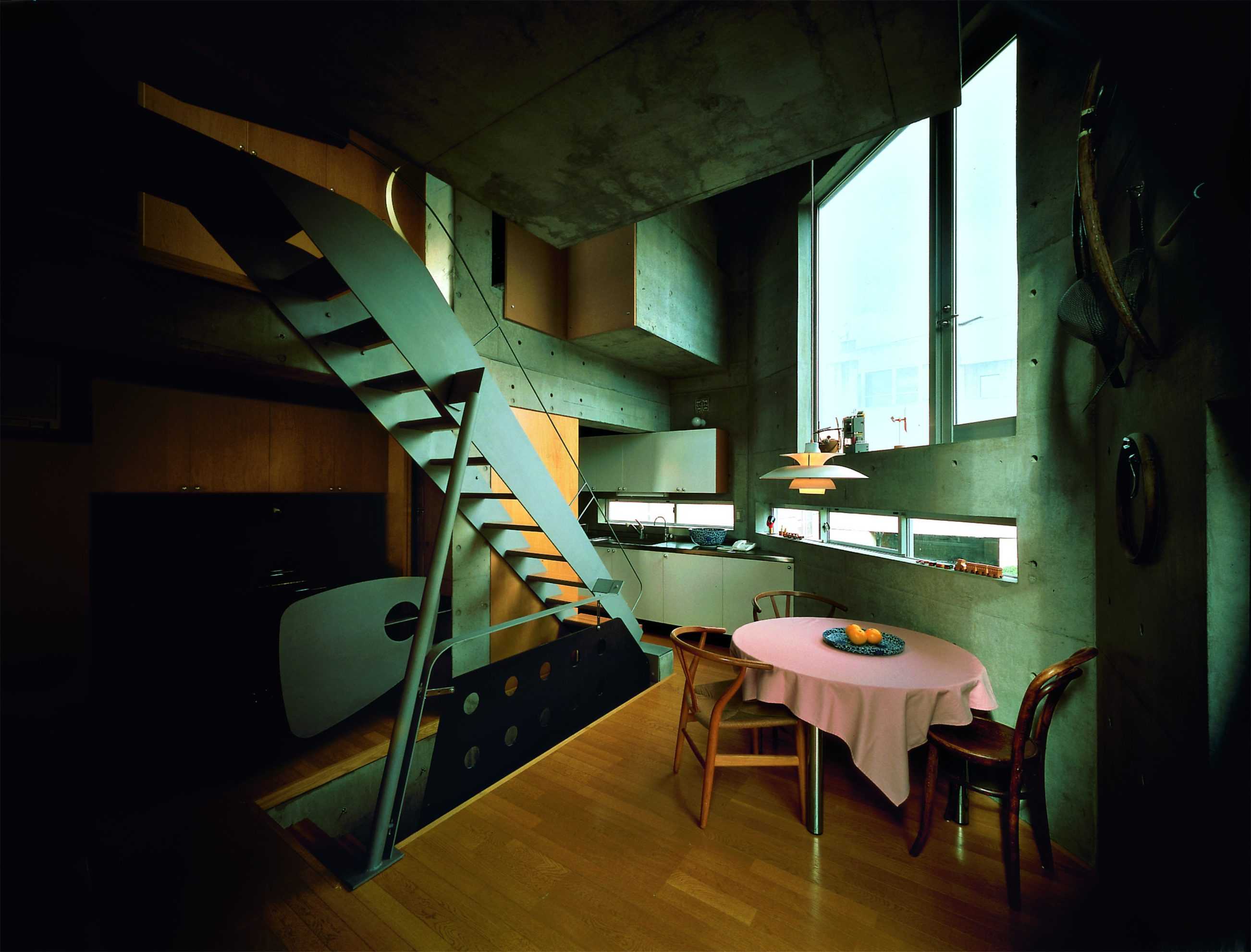
Suzuki House
TYPOLOGY: Residential
COUNTRY: Japan
CITY: Tokyo
YEAR: 1993
CLIENT: Akira Suzuki
AWARD: Goldmedal from Japanese Architects Institute 1994
PHOTOS: © Ryuji Miyamoto
A house as a large family room suspended in the city.
A house with a child’s room suspended within.
A house with two legs and a usable roof.
A house glanced by a passing Ninja (Impressed Shadow Façade).







